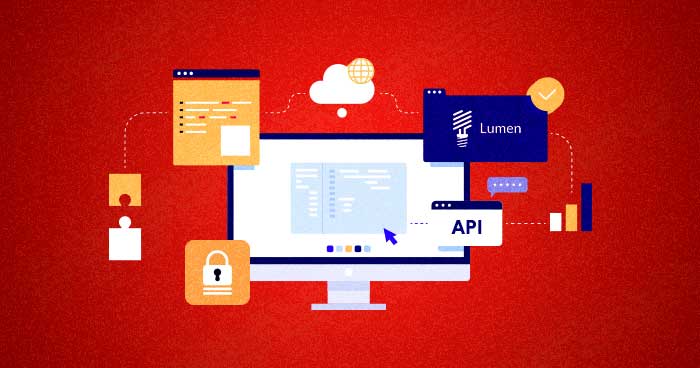The publicly available CloudwaysAPI promises unlimited possibilities! However, to determine the potential of the managed cloud hosting provider’s API without concrete examples is a bit unfair.
To empower developers and agencies, the engineers and community experts at Cloudways have already started using the API for integrations and automation of various processes and platforms. Because of this initiative, we have live examples that will help us understand the full capabilities of the latest addition to the Cloudways arsenal.
- Use the Cloudways API to interact with your Laravel based applications
- Manage your Cloudways hosted servers using the CloudwaysAPI
- Create a Slack chat bot and connect it with CloudwaysAPI to manage your Cloudways servers
- Use the Cloudways API to send the notifications of your CloudwaysBot to Asana

Given the fact that there are over 16,000 API publically available, the window of opportunity is rapidly closing. With the Cloudways API going public, the Playground is now open for testing out integrations and development. These integrations will further pave the way for use cases that will broaden the horizons of managed cloud hosting API applications.
I will now present four real-world examples of API implementation that clearly highlight the versatility of API and how these tools are used to solve real-world problems.
Let’s get started!
Use Case #1: WordPress at the Backend With JavaScript at the Front End
The New York Times, currently the second largest newspaper in the United States today and an early adopter of WordPress, powers it’s breaking news platform with the WP REST API. The front-end of the popular news website is rendered using the React.js, and the backend uses WordPress.
However, NYT is not the only example where WordPress powers the backend of the website/web app.
Another popular example is Nomadbase, a real-time live location updates provider also has a WordPress based backend that is integrated with a JavaScript based front end.
The primary reason for integrating API into the cloud is scalability. Not only does the product becomes scalable, the revenues scale as well. Saleforce.com, for example, generates about 50% of its revenue through API.
At any given time, a SaaS provider’s API servers can face a large spike in load utilization that is very taxing on both the memory and CPU limits. This particularly true for popular API where both web and mobile applications often utilize the same API endpoints for business logic. In fact, this has become a common enough problem in many cases.
Hosting API servers in the cloud offers the providers the ability of auto scaling servers based on CPU and utilization triggers to ensure that all services requesting API endpoints can function without timeout errors.
For content owners, API’s allow them to reach to new audiences. Regardless of the type of content produced, API allows the owners to scale, share and monetize data assets. API could become an essential component in the success of the organizations that provide platforms for content distribution and deployment. In practical terms, these organizations see a significant increase in audience for their customers.
Use Case #2: Ecommerce Store Owners and Retailers
Scalable API provide retailers the option to carry out transactions across multiple devices. This paves the way for creating new distribution channels and revenue streams and remarkably reduce the cost of infrastructure. One great example is eBay, one of the largest marketplaces for ecommerce buyers and sellers. eBay generates around 60% of its revenue from its publicly available API.
Additionally, as this use case from KaizenTek explains, scalable API are helpful in having a tax windfall.
On the business side, API allows companies to avoid having large capital expenditures and time delays because of physical servers in their data centers. This brings the added benefit of a “pay-as-you-go” model that is especially cost-effective in the case of seasonal spikes in API utilization (as happens on Black Friday and Cyber Monday).
The best thing about this strategy for company owners? A tax windfall.
By converting what otherwise would be classified as “cap-ex” from buying new servers (a post-tax cash outflow), into an operating expense on the Income Statement for cloud services (a pre-tax expense), reported earnings could be reduced. Owners have received huge tax savings from this strategy and increased free cash flow as a direct result of this strategy!
Use Case #3: Enhanced Customer Experience With Integrated Platforms
API serve as a strong pillar of a mutually beneficial ecosystem. Developers can make the core benefits of their platform available for integrations within customer’s’ systems, and customers can use the API to automate bulk operations. This makes the platform more valuable and accessible for agencies and SaaS vendors.
For instance, take Qebot, which utilizes the open API of SaaS-based technology providers to build their entire offering. Qebot partners with some of the best cloud software companies in the world, and utilize their API to integrate their functionality into a consolidated, easy to use, single sign-on platform for small and medium-sized businesses.
Through this structure, Qebot offers small business owners a single platform from where they can access tools like a website builder, CRM, email marketing, review management, social media management in a much simplified and cost-effective way.
Qebot’s partners love the system because it enables them to tap into a whole new sales channel without the costs of marketing, sales, or support.
Moreover, since Qebot taps into the API of its partners, it can extract and import data back and forth very easily. Because of this, they can build automation and cross-functionality between these tools. The integration allows Qebot to create a more holistic platform for small business owners to manage and grow their company fully.
Use Case #4: Security Is the Most Important Asset
Matt Fuller, from CloudSploit, shares a very interesting use case for cloud API.
“We have a different use for API that is extremely important to anyone using the cloud.
AWS all over the world uses our service. Users into CI/CD love our API to make sure their AWS account is properly configured before deploying it.
Continually monitoring for security and configuration vulnerabilities is crucial.
Even the most secure cloud providers only offer security OF the cloud. The user is responsible for security IN the cloud. As groups, roles, devices, etc. change oversights and misconfigurations open vulnerabilities that lead to outright hacks or just a financial DDOS.
Unfortunately, a single misstep can compromise your entire infrastructure.
CloudSploit continually monitors all or some of your AWS instance, based upon the tests you choose or create and the frequency you want them to run. If an issue is found, it alerts whomever you designate and keeps a record of the finding along with detailed descriptions of the issue and its likely resolution.”
Security experts from all around the world are contributing to CloudSploit. The project is based on open source technology. The goal of CloudSploit is to increase compliance with best practices that protect the company infrastructure and their client’s information.
The Rise Of The API Ecosystem
During the initial years of the API economy, the API’s were clearly built for use by developers. Companies usually branded their API’s for use by developers and coders. API-centric companies chose to market themselves by either using hackathons, sponsoring different developer events, and sending out their developers to attend events and be a speaker at a conference.
Times have now changed. Have a look at this image below. The following image clearly shows that different enterprises are now incorporating different business models for their API’s.

Source: ProgrammableWeb
The API economy has now matured, and something as technical as an API is now a product that not only appeals to developers but attracts marketers as well. Sears, one of the largest retails chains in the United States is leveraging the API economy, as Abhay Jain, Director of Online Technology states,
“As the top retailer in multichannel reach, Open APIs are a critical element for expanding our brand and creating new opportunities for engaging with customers wherever they are.”
In fact, an API now appeals to more people with broad profiles. API’s are now becoming a part of some seasoned marketers, designers, sales, and customer success teams. The thin line that was existing between API and pure SaaS-based products is now diminishing, and thus, giving rise to more companies and startups in the API arena.
Initially, product interaction using API’s was mainly via a code editor. However, API’s have now evolved, and most of the touchpoints are now through Playgrounds (compilation of codes), widgets, and messaging bots. This trend has made it easier for startups to embrace API’s for marketers and people other than developers. One such example of this trend follower is Clearbit, which offers options for integrations via plugins for Salesforce, Slack, Gmail, etc…WITHOUT TOUCHING A LINE OF CODE.
What Is Next?
The above use-cases clearly show that the field is now much open for API based startups. Going forward, the eco-system will only become stronger with a focused interest in enterprise level technologies like SaaS vendors, Internet of Things, and the ever popular, AI. For all these areas to accelerate growth, API is at the center of all these areas.
The rise of enterprise level software development has allowed a large number of companies to emerge that are using third-party API’s. The low-interaction model and a lack of concentration from customers have lead businesses to develop easier to use API’s. Developers are now shifting their focus to making their product more user-friendly and accessible for a mass number of users. As John Musser, Founder of ProgrammableWeb puts it,
“Bake your Business Model into your API.”
My Two Cents on This?
Salesforce.com, one of the pioneers of the API economy generate more than half of their $6.667 billion using their APIs. Twitter processes more than 13 billion transactions in a day thanks to its API’s. And another stellar example, Amazon, is quickly closing in on more than a trillion transactions using its API. For an online bookseller, this is a huge number to not, specially for the API economy.
All these numbers have got me really excited, to say the least. I look forward to seeing more of these outside-the-box enterprises and SME’s to open up their applications for users other than developers. Come the future; more developer-centric API’s are going to look to open up their products for people with little to no technical expertise.
What are you most excited about the API ecosystem? Tell us your thoughts and plans in the comments below!
Umair Qureshi
Umair Qureshi works as Assistant Digital Marketing Manager for Cloudways- A Managed Cloud Hosting Platform. He loves combining creativity with skills and marketing with technology.


